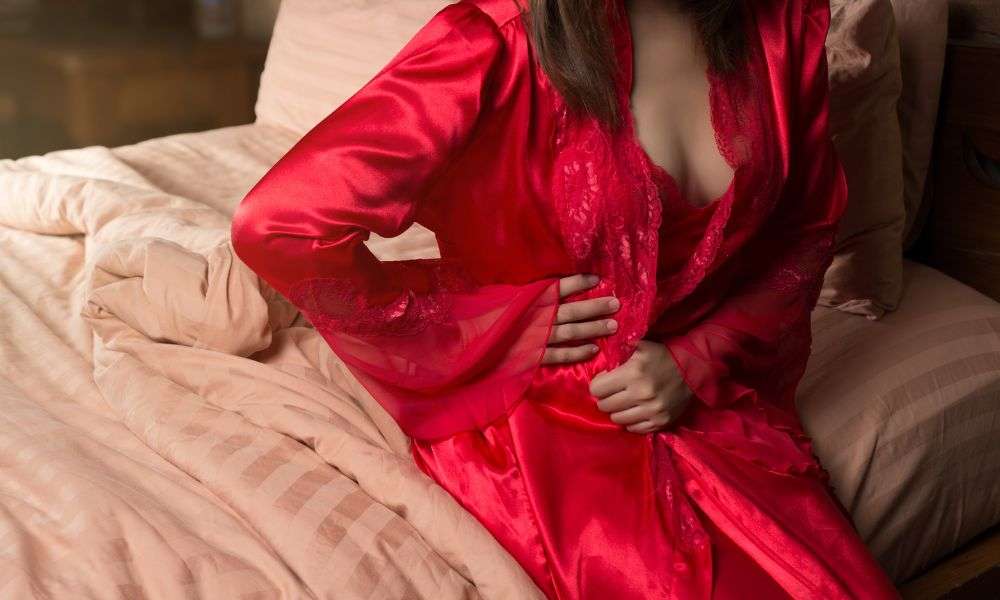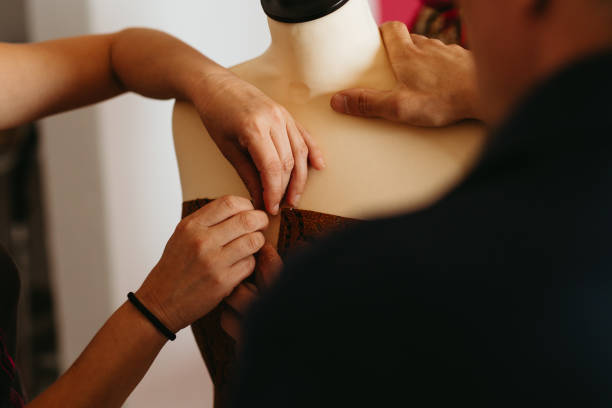Sleepwear Essentials: Comfort and Style for Every Woman
Quality sleepwear is more than just something to wear to bed—it's an investment in your comfort, health, and well-being. The right sleepwear can improve your sleep quality, regulate body temperature, and make you feel confident and comfortable throughout the night. With countless styles, fabrics, and designs available, finding the perfect sleepwear has never been easier or more important for women's overall wellness.

What Makes Front Opening Nighties Collection Special?
Front opening nighties represent a thoughtful design innovation in women’s sleepwear that combines practicality with elegance. Unlike traditional pullover nightgowns, these designs feature buttons, snaps, or zippers along the front, making them significantly easier to put on and take off. This accessibility feature proves particularly beneficial for women with mobility issues, pregnant women, nursing mothers, or those recovering from surgery.
The convenience factor extends beyond just ease of wear. Front opening nighties often incorporate design elements that enhance their functionality – strategically placed closures that can be partially opened for nursing mothers, softer fabrics around sensitive areas, and adjustable openings that accommodate changing body needs. Many collections feature varying lengths from knee-length to full-length options, accommodating different preferences and seasons.
From a style perspective, front opening nighties often present a more structured silhouette compared to their pullover counterparts. Designers frequently embellish these nighties with delicate lace trims, contrasting piping, or decorative buttons that transform them from purely functional garments to elegant sleepwear options. The front opening design also allows for more detailed necklines and collars that frame the face beautifully, creating sleepwear that feels both comfortable and sophisticated.
How to Choose Comfortable Sleepwear for Women?
Selecting comfortable sleepwear begins with fabric consideration – the foundation of sleep comfort. Natural fibers like cotton offer breathability and softness ideal for warm sleepers or summer nights, while silk provides a lightweight, luxurious option that regulates temperature effectively. For colder seasons, flannel and fleece provide warmth without bulk, and modern performance fabrics incorporate moisture-wicking properties for those who experience night sweats.
Fit plays an equally important role in sleepwear comfort. The ideal sleepwear should allow for natural movement during sleep without restriction – neither too tight to cause discomfort nor so loose that it bunches up during the night. Elastic waistbands should be gentle yet secure, sleeve openings should accommodate arm movement, and necklines should never feel constrictive. Many women find that sizing up slightly from their daytime clothes provides the optimal balance of comfort and fit in sleepwear.
Seasonal considerations also factor heavily into sleepwear selection. Summer calls for shorter sleeves, lighter fabrics, and often shorter lengths to prevent overheating. Winter sleepwear might incorporate features like long sleeves, covered feet, or layerable pieces. Year-round options include temperature-regulating fabrics and adaptable designs like button-up tops that can be adjusted based on comfort needs. The most comfortable sleepwear ultimately aligns with both personal sleeping habits and environmental factors like bedroom temperature and humidity levels.
How to Navigate Intimate and Sleepwear Options for Women?
The boundary between intimate apparel and sleepwear often blurs, with many pieces serving dual purposes. Understanding this spectrum helps women make choices that align with their comfort levels and practical needs. On one end lie purely functional sleepwear pieces designed primarily for comfortable sleep—loose pajama sets, modest nightgowns, and practical sleepshirts. The middle ground includes pieces that balance comfort with aesthetic appeal—silk chemises, coordinated camisole sets, and stylish pajamas with feminine details.
Personal preference plays a significant role in navigating these options. Some women prioritize coverage and modesty in their sleepwear choices, while others prefer more revealing designs that make them feel confident and feminine. Neither approach is inherently better—the key is identifying what feels most comfortable both physically and psychologically for restful sleep. Many women maintain different sleepwear categories for different contexts, selecting different pieces when sleeping alone versus with a partner, or when traveling versus at home.
The functionality aspect of sleepwear deserves careful consideration as well. Features like pockets, adjustable straps, elastic that doesn’t dig into skin, and appropriate coverage based on sleeping environment all contribute to overall satisfaction. For women experiencing specific life stages like pregnancy, menopause, or postoperative recovery, specialized sleepwear options address unique needs through adaptive designs, cooling fabrics, or strategic openings. The most successful approach to navigating these options involves assessing individual priorities—whether that’s pure comfort, aesthetic appeal, versatility, or specific functional requirements—and selecting accordingly.
Essential Sleepwear Pieces for a Complete Collection
Building a versatile sleepwear wardrobe involves several key pieces that cover different seasons and needs. A pair of lightweight cotton pajamas provides year-round comfort with breathability and ease of movement. For colder months, flannel pajama sets or nightgowns offer cozy warmth without sacrificing style. Sleep shirts or oversized t-shirts serve as casual, comfortable options for those who prefer minimal constraint during sleep.
Front-opening nightgowns or button-down pajama tops represent practical additions that combine accessibility with comfort. These designs allow for easy temperature regulation and prove particularly useful for nursing mothers or those with mobility considerations. For warmer weather, short sets with breathable fabrics or lightweight chemises keep the body cool while maintaining comfort throughout the night.
Completing the collection with appropriate layering pieces enhances versatility. A well-chosen robe serves as both a practical cover-up and an extension of personal style, while bed jackets or sleep hoodies provide targeted warmth without overheating. Slippers or bed socks represent final touches that contribute significantly to overall sleep comfort, especially during colder seasons. The most effective sleepwear collection contains pieces that can mix and match while accommodating changing seasons and personal needs.
Comparing Women’s Sleepwear Materials
The fabric choice for sleepwear significantly impacts comfort, durability, and overall sleep quality. Understanding the properties of different materials helps in making informed selections that meet individual needs.
| Material | Key Properties | Best For | Price Range |
|---|---|---|---|
| Cotton | Breathable, soft, hypoallergenic, easy to care for | Year-round use, sensitive skin | $20-$80 |
| Silk | Luxurious, temperature-regulating, gentle on skin and hair | All seasons, menopausal symptoms | $50-$300 |
| Modal | Extremely soft, durable, moisture-wicking | Hot sleepers, year-round comfort | $30-$120 |
| Flannel | Warm, cozy, soft, often brushed for extra comfort | Winter, cold environments | $25-$90 |
| Bamboo | Eco-friendly, moisture-wicking, antibacterial | Sensitive skin, hot sleepers | $35-$150 |
| Microfiber | Lightweight, quick-drying, durable | Budget options, travel | $15-$60 |
Prices, rates, or cost estimates mentioned in this article are based on the latest available information but may change over time. Independent research is advised before making financial decisions.
Care and Maintenance of Quality Sleepwear
Proper care extends the life of sleepwear investments while maintaining their comfort and appearance. Most cotton sleepwear responds well to machine washing in cold water and tumble drying on low heat, though line drying preserves elasticity and prevents shrinkage. Delicate materials like silk require special attention—handwashing with mild detergent or dry cleaning depending on the manufacturer’s recommendations provides the best results. For all sleepwear types, turning garments inside out before washing helps preserve colors and printed designs.
Storage considerations also impact longevity. Folding rather than hanging preserves the shape of most sleepwear items, particularly knitted fabrics that can stretch when hung. Drawer dividers or dedicated storage boxes protect delicate pieces from snags or pulls. For seasonal storage, ensuring items are thoroughly clean and completely dry before storing prevents mildew development and fabric deterioration.
Addressing common issues proactively extends sleepwear life significantly. Loose threads should be carefully trimmed rather than pulled, which can unravel seams. Small holes or tears benefit from immediate attention with appropriate mending techniques. Even high-quality elastic eventually loses resilience—replacing waistbands or straps when they begin to stretch out revitalizes otherwise serviceable sleepwear pieces, making proper maintenance as important as the initial selection process.




